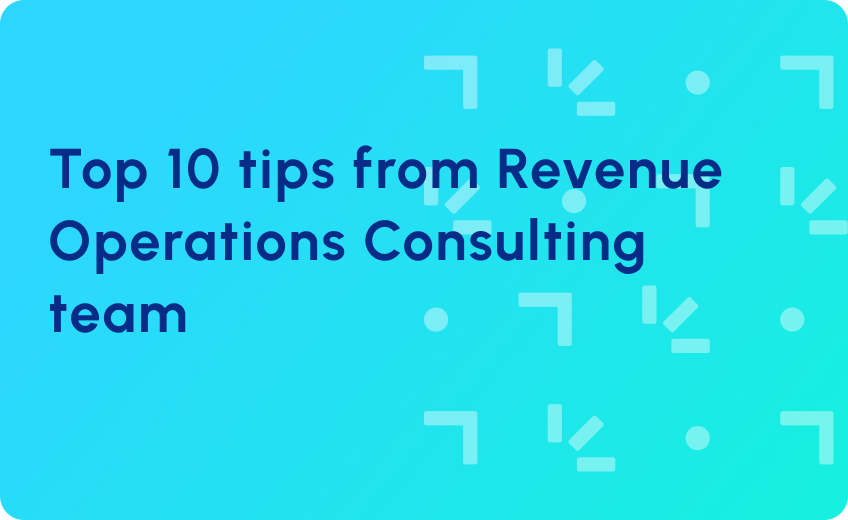
HubSpot Attribution Views: A RevOps Leader’s Guide
Revenue conversations often break down at attribution. Marketing highlights campaign ROI. Sales questions lead quality. Finance doubts the numbers. Leadership loses confidence in the funnel altogether.
Usually, data is scattered, configured differently, or presented in ways no one fully believes, leaving every team with a different version of “what’s working.”
The fix: build attribution views in HubSpot that actually answer business questions. Consequently, they enable faster decisions, cleaner reporting, and cross-team alignment on what’s truly driving revenue. Here’s a proven, RevOps-tested framework to make that happen.
Understand What HubSpot Attribution Can (and Can’t) Do
HubSpot attribution reporting is powerful. But that’s only if you respect its boundaries. It handles multi-touch attribution well, offering models like first touch, last touch, linear, and U-shaped. It also ties attribution directly to deals rather than just contacts, and it can break down contribution by channel, campaign, and even content level.
But it isn’t perfect. It can’t track anonymous touches such as paid impressions that happen before a form fill. It also won’t retroactively assign attribution for deals created before contact association. And it’s not a replacement for Salesforce campaign influence models in hybrid stacks.
HubSpot cannot match Salesforce campaign influence 1:1. But with proper HubSpot RevOps reporting setup and deal-based attribution, you can achieve reliable pipeline insights without needing two attribution systems.
Step 1: Define Your Attribution Goals
Attribution is a decision tool, not a reporting checkbox. So, start by defining what you need to decide.
Questions to clarify:
- Which channels generate MQLs that become opportunities fastest?
- Which campaigns or content influence high-velocity deals?
- Are paid programs contributing real pipeline, or just volume?
Pick a model based on the question:
- First Touch: Compare channels driving net-new leads.
- U-Shaped: Understand marketing influence across early and mid-funnel.
- Last Touch: Optimize deal acceleration and conversion triggers.
But do you need multiple models? Sometimes. Comparing models for the same dataset helps validate assumptions before making budget or strategy decisions.
Step 2: Align Your Lifecycle and Deal Association Logic
HubSpot attribution is only as clean as your contact to deal association HubSpot setup.
Define when contacts should be auto-associated with deals, how lifecycle stages map to attribution checkpoints, like SQL = opp creation, and what happens when contacts are created after a deal already exists.
Use automation to enforce consistency. Why? Because if contacts aren’t linked before the deal is created, attribution breaks downstream.
Pro tip: Manual association is usually not safe. Manual steps create gaps. Thus, automated association using workflows or rules should be standard in every RevOps system’s design.
Step 3: Configure Attribution Reports the Right Way
Building reliable HubSpot attribution reporting requires intentional setup.
Checklist:
- Pick the right conversion point, like deal creation or closed-won, not arbitrary dates.
- Use deal-based, not contact-based, attribution for revenue analysis.
- Filter by pipeline, lifecycle stage, or channel to segment insights cleanly.
- Validate logic against expectations. For example, paid search should not show zero influence if active campaigns exist.
Step 4: Build Stakeholder-Specific Attribution Views
Different teams need different views. So, one generic dashboard won’t build trust.
For demand gen:
- Which campaigns contribute most to SQL creation?
- Which channels are most cost-efficient?
For sales:
- Which programs warm deals pre-opportunity?
- Are MQLs actually converting?
For leadership:
- What % of the pipeline is marketing-influenced?
- How does ROI distribute across paid, organic, and partner sources?
Also, build filtered HubSpot campaign attribution dashboards per audience, clear, role-based, and actionable.
This way, make sure everyone sees the same data. The same truth, yes. But in different lenses. The right view builds trust without overwhelming teams with irrelevant metrics.
Step 5: Operationalize Attribution QA
Even the best dashboards fail without ongoing quality control.
Run monthly checks:
- Confirm UTMs are being captured consistently.
- Audit deals for missing contact associations.
- Review lifecycle progression before opportunity creation.
- Flag anomalies where attribution logic doesn’t align with expected channel impact.
Besides this, can attribution QA be automated? Yes, but partially. Alerts for missing associations or blank source data can be built into HubSpot workflows. However, human review still catches what automation misses.
Final Impact: Attribution You Can Trust
When attribution works, budget fights disappear, GTM alignment accelerates, and leadership trusts RevOps as the single source of revenue truth.
So, you need a disciplined setup of HubSpot attribution reporting, proper contact-to-deal association, and role-specific attribution views.
Ready to fix your attribution issues?
We help B2B teams turn messy HubSpot data into decision-ready attribution dashboards. If your reports cause more arguments than insights, let’s design the framework, clean the logic, and give your GTM teams attribution they can finally trust. Book a 1:1 strategy session with us right away!




